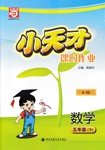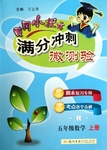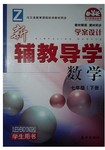题目内容
【题目】The New economy has brought great business opportunities besides great challenges. Not since the Industrial Revolution has managing with change been so urgent a matter. Indeed, the Information Age has accelerated the pace of market and business changes to the point where some firms have set up "change departments" whose job is to constantly look for opportunities to change the firm and make it more productive.
Most firms have accepted the fact that they must make major changes. To remain competitive, companies recognize that they need to be in a constant process of changing themselves. This change is accompanied by the need to be willing to take risks in management style. Managers with such spirit have called themselves "change agents".
Despite some remarkable successes, however, introducing managing change has not been a simple matter. Firms have tried to introduce change to achieve its attendant efficiencies (节省幵支)through new technologies, restructuring, or outsourcing. Yet, this has cost a great deal of time and money, but often led to at best mixed results: approximately 75% of all change activities failed. 、
The reason for most of these failures is that change often lacks a central focus. Managers become confused by all different and sometimes conflicting advice they receive about change management. The result is a loss of central focus and disorganized policies. To improve their chances of success, it is extremely important that managers should understand the nature and process of the whole company's change and its challenges much better.
【1】What is the article mainly about?
A. Developing strong marketing plans.
B. Bringing in top technologies.
C. Ways for companies to hire better managers.
D. Changes of companies' operations.
【2】The words "change agents" in Paragraph 2 are closest in meaning to “_____ ”.
A. instructors B. customers
C. reformers D. performers
【3】According to the article, why do companies frequently fail to change?
A. Managers are conservative. B. Not enough attention is paid.
C. Employees generally fight change. D. Policies are not well directed.
【4】What does the article suggest managers do?
A. Spend more time and money. B. Improve their knowledge.
C. Buy more advanced technologies. D. Face their challenge directly.
【答案】
【1】D
【2】C
【3】D
【4】B
【解析】本文是一篇议论文。主要说了新型经济不仅带来了挑战,同时也带来了机遇。但在改变过程中遇到了失败……总结失败原因,提升管理者能力,更好的进行企业改革和应对挑战。
【1】主旨大意题。从第一段中“Not since the Industrial Revolution has managing with change been so urgent a matter. ” 和“change departments”及上下文可以看出本文主要内容为“企业管理的改变”。故选D
【2】词义推断题。根据文章内容及第二段开头“Most firms have accepted the fact that they must make major changes”可以得知,A:“指导员”、B:“顾客”、C:“改革者”、D:“演出者”所以选C。
【3】细节理解题。从最后一段中“The reason for most of these failures is that change often lacks a central focus. ”和“The result is a loss of central focus and disorganized policies. ”可以看出选D。
【4】细节理解题。从最后一段中“advice they receive about change management. ”得知文章主要建议经理们增长知识。故选B。

 小天才课时作业系列答案
小天才课时作业系列答案 一课四练系列答案
一课四练系列答案 黄冈小状元满分冲刺微测验系列答案
黄冈小状元满分冲刺微测验系列答案 新辅教导学系列答案
新辅教导学系列答案 阳光同学一线名师全优好卷系列答案
阳光同学一线名师全优好卷系列答案